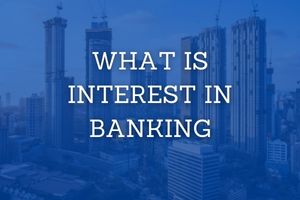What is Interest? In simple terms, Interest is the cost of borrowing. The borrower pays the interest and the lender receives it.
Table of Contents
- How Does Interest Actually Work?
- Interest Payments When Borrowing
- Interest Payments When Lending
- Do we Have To Pay Interest?
- Interest in Installment Debt
- Interest on Revolving Debt
- Additional Costs Aside From Interest
- How Do We Earn Interest?
- FAQs: Frequently Asked Questions
How Does Interest Actually Work?
The interest rate is the price of the debt. Anyone could be on either side of this situation. Taking out a loan creates a liability and interest must be paid. When you give money to someone else (such as a bank), they make a loan and receive interest. Amounts paid or received are usually stated as an annual percentage, but need not be. Interest requires additional repayments on top of the original loan balance or deposit. Because of the interest, you will end up paying back more than you borrowed from the lender. Conversely, interest payments make the loan profitable to the lender.

As a simple example, if you take out a loan to buy a car, you are obligated to pay the amount of the loan (also called “principal”) plus the interest charged by the lender. If your car loan is $10,000 with an interest rate of 6%, you will have to repay $10,000 and pay the lender his 6% of $10,000 (i.e. $600) for a total of $10,600. Your lender will determine how long you must repay this amount.
On the other hand, if you put money into a savings account, you can earn interest. If you deposit $10,000 into an account that earns 6% interest, you not only keep your $10,000 but also earn an additional $600 in interest. Assuming you’re using simple interest, after a year you’ll have $10,600 in your savings account.
There are several ways to calculate interest, some of which are more profitable for lenders. The decision to pay interest depends on what you get in return, and the decision to earn interest depends on the different ways you invest your money.
Interest Payments When Borrowing
To borrow money, you have to return what you borrowed. You also have to repay more than you borrowed to cover the risks and inconveniences of the lender. The longer the money is borrowed, perceived by the lender as a higher risk, the more interest it will pay.
Interest Payments When Lending
If you have extra money available, either lend it yourself or put it in a savings account so your bank can lend it or invest it for you and in return you expect interest. If you aren’t earning anything, you may be tempted to spend money instead, as there is little benefit to waiting.
Much like interest on a loan, interest depends on the risk, whom you lend it to, and how long you want to spend your money. Savings accounts are guaranteed by the government, so there is no risk and you can basically withdraw your money whenever you want. That is why interest rates on savings accounts are much lower than other interest-bearing options.
Do we Have To Pay Interest?
When you borrow money, you usually have to pay interest. However, this may not be obvious, as there is not always a separate invoice for line item transactions and interest expenses.
Interest in Installment Debt
For loans such as standard mortgages, auto loans, and student loans, interest costs are included in your monthly payment. Each month, part of your payment goes to paying off your debt, and part of the rest goes to interest expenses. These loans allow you to pay off your debt over a period of time (for example, a 10-year mortgage or a 7-year car loan).
Interest on Revolving Debt
Other loans are revolving loans. You can borrow more each month and pay off your debts on a regular basis. For example, credit cards can be used repeatedly if the credit limit is not exceeded.
Interest calculation is a bit different. Check your loan agreement to see how interest is calculated and how payments work.
Additional Costs Aside From Interest
Loans are often quoted on an annual percentage rate (APR) basis. This number reflects annual payments and may include additional non-interest costs. Your net interest cost is the interest rate (not the APR). Some loans pay closing costs or financing costs. This is technically determined by the size of the loan and the interest rate, not the interest cost. Looking at the difference between the interest rate and the annual rate is useful. For comparison, APR(Annual Percentage rate) is usually the better tool.
How Do We Earn Interest?
Interest accrues when you lend money or put money into an interest-bearing bank account, such as a bank savings account. In account deposits, banks make loans. They use your money to provide loans and invest in other customers. When the bank makes money, it gives you a portion of that income in the form of interest.
Periodically (such as monthly or quarterly), the bank pays interest on your savings. You will notice that interest payment transactions appear and your account balance increases. You can continue to earn interest by spending this money or keeping it in your account.
Your savings can really grow if you keep your interest in the account. Earn interest on your original deposit and interest credited to your account. Earning interest on top of existing interest is called compound interest.
Suppose you deposit $1,000 into a savings account with an interest rate of 5%. At simple interest, that’s $50 a year. Let’s calculate:
- Multiply $1,000 by 5% interest in savings
- $1,00 x .05 = $50 in your earnings
- Account balance after one year = $1050.
However, most banks calculate interest income daily rather than annually. This works to your advantage because it uses compound interest. Suppose a bank calculates interest daily.
- After one year your account balance would be $1,051.27.
- The annual Percentage Yield (APY) would be 5.13%.
- Over the year you would earn $51.27 in interest.
The differences may seem small, but they add up. Earn a little more for every $1,000. Over time, the process continues to lead to ever greater returns as you make more deposits. If you leave your account alone, it will cost you $51.27 the first year, but $53.89 the next year.
FAQs: Frequently Asked Questions
Who pays interest on a loan?
On a loan, the borrower pays interest. In some cases, the lender may offer 0% interest subsidy to save the borrower money. However, if interest accrues on the loan, the borrower bears the interest.
How does raising interest rates affects inflation?
As interest rates rise, borrowing costs rise. In theory, this means fewer people and businesses borrowing, and less spending across the economy. In other words, if the demand curve shifts and there is less demand for goods and services, firms will be unable to raise prices and inflation will slow.



